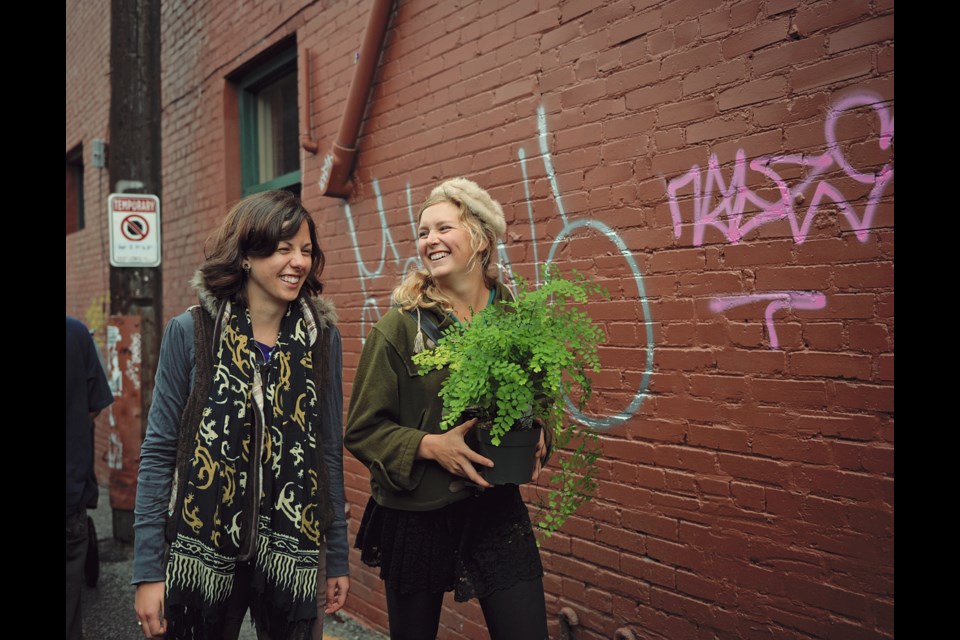City alleys are a forgettable part of Vancouver’s urban landscape, often marked by garbage, filth and the acrid stench of urine. It’s a scene Mount Pleasant’s Sam Cameron knows all too well after spending months roaming local alleys. Yet despite what his senses took in, it was tempered by a bright vision.
“Alleys are secondary spaces that are treated as such,” he said. “There are used mattresses, broken televisions… The idea is to change that perception of what space is.”
The subject enticed Cameron so much that he decided to write his thesis on Vancouver laneways after returning home from Sweden where he was working on his masters degree in sustainable urban planning and design at the Royal Institute of Technology in Stockholm. And thus his plan to come up with laneway revitalization proposals had begun.
There’s no better way to make a point than to prove it, which is what Cameron and the Livable Laneways group he’s a part of did this past Sunday afternoon. The Laneway Market transformed the unremarkable alley between East Seventh and Broadway, just west of Main, into a vibrant pedestrian walkway lined with tents and vendors selling everything from silver jewelry made out of cutlery to handmade clothing, robust potted plants and leather wallets.
“I had a gentleman approach me and he said this reminds him of Quebec City,” said Cameron. “Which is our idea… to focus more on pedestrian-type activities in laneways.”
Livable Laneways founder Rob Sutherland spent the hours leading up to Sunday’s market prepping the alley. The cleaning list included removing garbage, rolling all the metal garbage bins to a street over for the afternoon, and power-washing the alley with the help of a crew from Gum Busters.
Sutherland acknowledged it’s been an experiment for his small group of six; the first Livable Laneways market opened four years ago and nobody showed up because it wasn’t well promoted. The group received funding from the city for the last two years, and had better success, though it didn’t receive funds this year.
The Mount Pleasant Business Improvement Association suggested Livable Laneways team up for the fourth annual Autumn Shift festival so both events could run at the same time, only a block apart. It was a smart move as the alley was packed all day long, even during a mid-afternoon downpour.
Mount Pleasant resident Diane Lefroy stepped up and paid for all the bands to perform, for which Living Laneways is extremely grateful. “If we had 20 people like her, this city would be a different place,” said Sutherland.
The idea of using alleys as intimate public spaces is catching on in other cities outside of Europe, where it’s become part of the culture. Melbourne, Australia started encouraging public art and performances in laneways since 2001 and have become tourist attractions compared to 20 years ago when the city’s core was a dead zone. Closer to home, Seattle started promoting usable laneways in the Pioneer Square district where once derelict alleys now host monthly events including movie screenings, art shows, concerts and art performances.
The transformation in Vancouver will take some time before perceptions are altered about a typical alley’s potential, and there are the practical details, Cameron noted. For instance, there are the dumpsters to deal with (part of the Seattle initiative has been to move to a smaller waste bin, which is emptied every day) as well as the issue of public urination (San Fransisco is tackling the problem by experimenting with a public urinal called the Pplanter, which converts the by-product into a plant irrigation system to water the alley’s bamboo).
“Each neighborhood has its own characteristics,” said Cameron. “And almost every road here has an alley so there’s a lot of potential.”



